Lynis is an open-source and much powerful auditing tool for Unix/Linux-like operating systems. It scans the system for security information, general system information, installed and available software information, configuration mistakes, security issues, user accounts without a password, wrong file permissions, firewall auditing, etc.
Lynis is one of the most trusted automated auditing tools for software patch management, malware scanning, and vulnerability detecting in Unix/Linux-based systems. This tool is useful for auditors, network and system administrators, security specialists, and penetration testers.
Since Lynis is flexible, it is used for various different purposes that include:
- Security auditing
- Compliance testing
- Penetration testing
- Vulnerability detection
- System hardening
A new major version of Lynis 3.0.4 is released, after months of development, which comes with some new features and tests, and many small improvements. I encourage all Linux users to test and upgrade to this most recent version of Lynis.
In this article, we are going to show you how to install Lynis 3.0.4 (Linux Auditing Tool) in Linux systems using source tarball files.
Please Read Also :
- Install ConfigServer Security & Firewall (CSF)
- Install Linux Rkhunter (Rootkit Hunter)
- Install Linux Malware Detect (LMD)
Installation of Lynis in Linux
Installing Lynis via a system package manager is one of the easiest ways to get started with Lynis. To install Lynis on your distribution, follow the instructions below.
Install Lynis on Debian, Ubuntu & Mint
$ sudo apt-key adv --keyserver keyserver.ubuntu.com --recv-keys C80E383C3DE9F082E01391A0366C67DE91CA5D5F $ sudo apt install apt-transport-https $ echo "deb https://packages.cisofy.com/community/lynis/deb/ stable main" | sudo tee /etc/apt/sources.list.d/cisofy-lynis.list $ apt update $ apt install lynis $ lynis show version
Install Lynis on CentOS, RHEL, and Fedora
# yum update ca-certificates curl nss openssl # cat >/etc/yum.repos.d/cisofy-lynis.repo <<EOL [lynis] name=CISOfy Software - Lynis package baseurl=https://packages.cisofy.com/community/lynis/rpm/ enabled=1 gpgkey=https://packages.cisofy.com/keys/cisofy-software-rpms-public.key gpgcheck=1 priority=2 EOL # yum makecache fast # yum install lynis
Install Lynis on openSUSE
$ sudo rpm --import https://packages.cisofy.com/keys/cisofy-software-rpms-public.key $ sudo zypper addrepo --gpgcheck --name "CISOfy Lynis repository" --priority 1 --refresh --type rpm-md https://packages.cisofy.com/community/lynis/rpm/ lynis $ sudo zypper repos $ sudo zypper refresh $ sudo zypper install lynis
Installation of Lynis Using Source
If you don’t want to install Lynis, you can download the source file and run it directly from any directory. So, it is a good idea to create a custom directory for Lynis under /usr/local/lynis.
# mkdir /usr/local/lynis
Download a stable version of Lynis source files from the trusted website using the wget command and unpack it using the tar command as shown below.
# cd /usr/local/lynis # wget https://downloads.cisofy.com/lynis/lynis-3.0.4.tar.gz
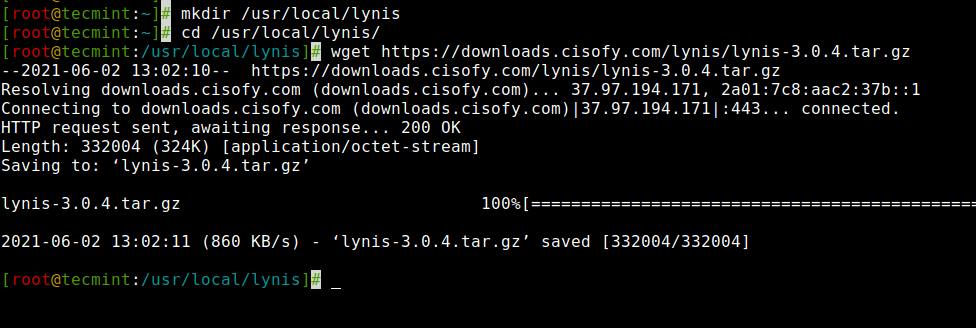
Unpack the tarball
# tar -xvf lynis-3.0.4.tar.gz
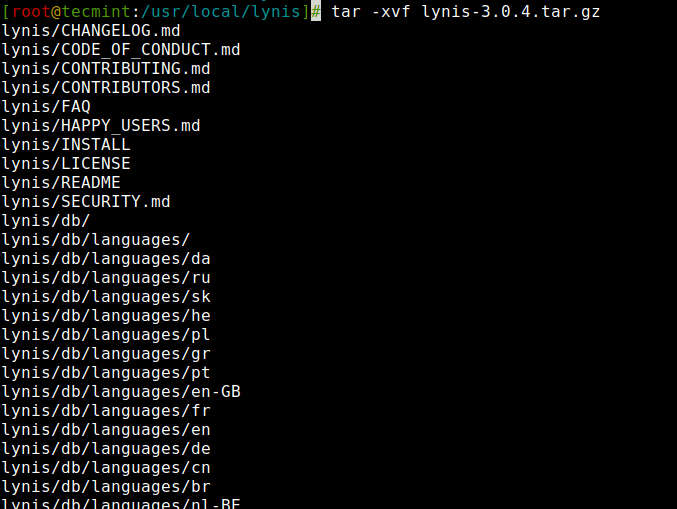
Running and Using Lynis Basics
You must be the root user to run Lynis because it creates and writes output to /var/log/lynis.log file. To run Lynis execute the following command.
# cd lynis # ./lynis
By running ./lynis without any option, it will provide you a complete list of available parameters and goes back to the shell prompt. See figure below.
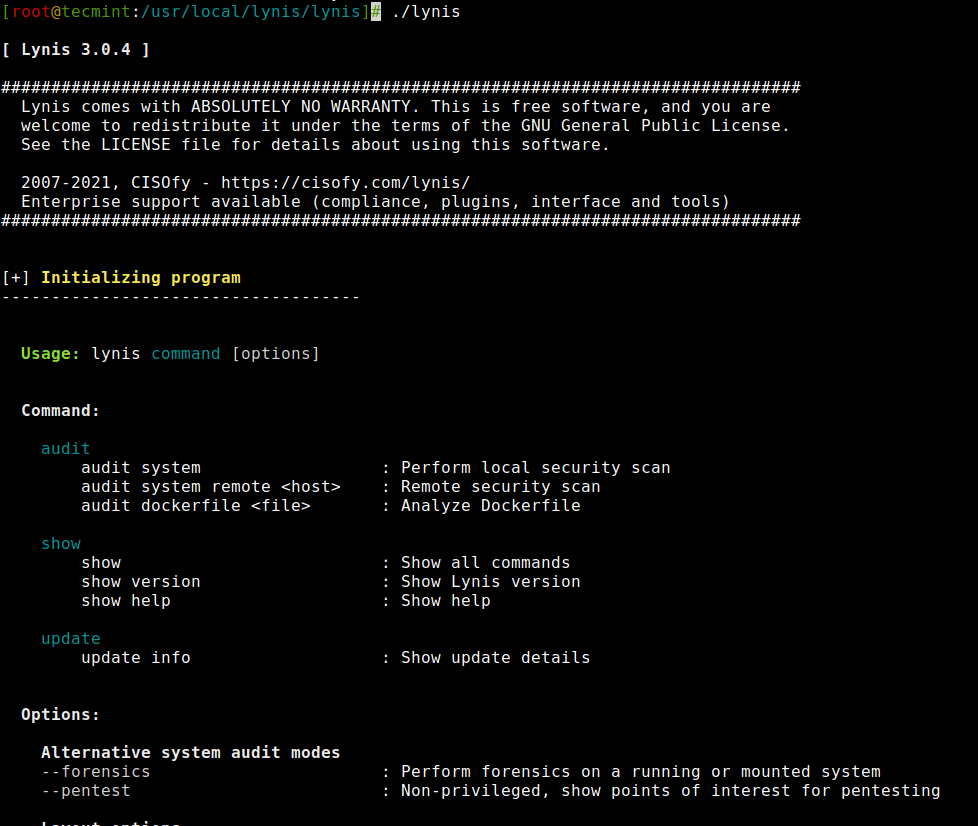
To start the Lynis process, you must define a audit system parameter to begin scanning your entire Linux system. Use the following command to start a scan with parameters as shown below.
# ./lynis audit system Or # lynis audit system
Once, you execute the above command it will start scanning your system and ask you to press [Enter] to continue, or [CTRL]+C to stop) every process it scans and completes. See the screenshot attached below.
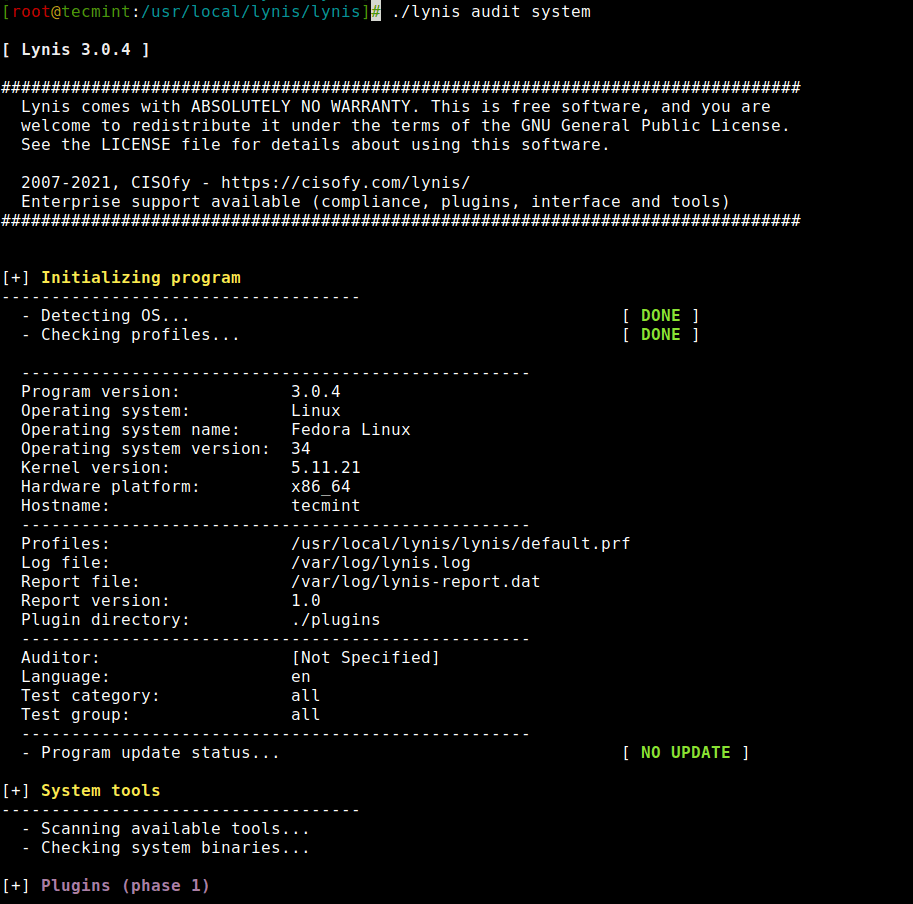
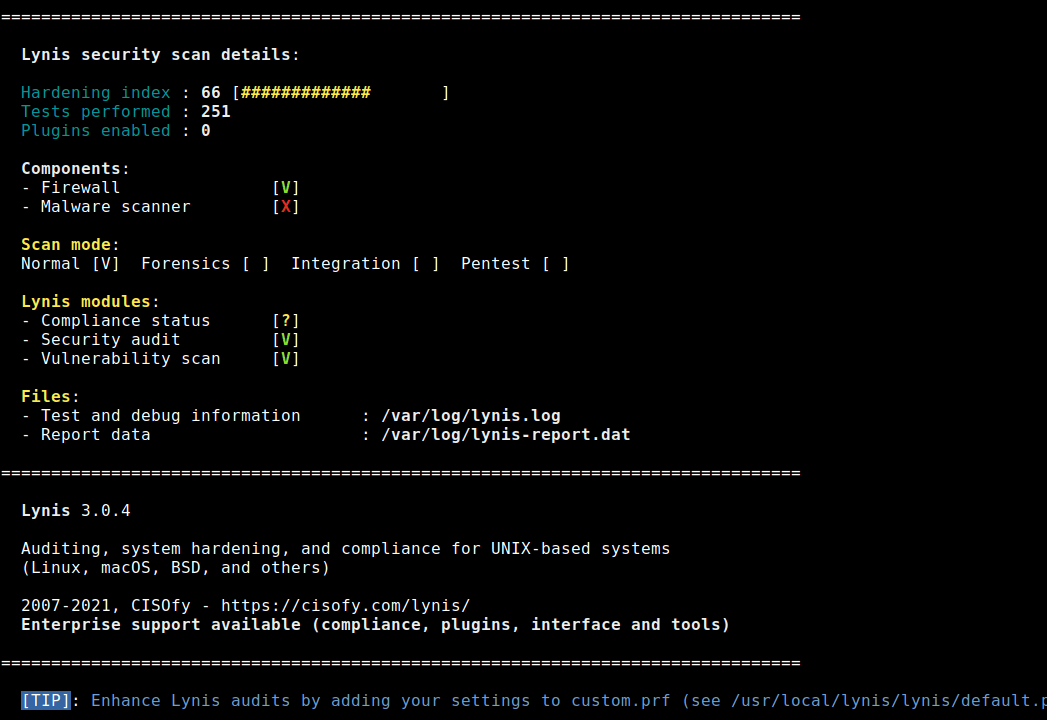
Creating Lynis Cronjobs
If you would like to create a daily scan report of your system, then you need to set a cron job for it. Run the following command at the shell.
# crontab -e
Add the following cron job with the option --cronjob all the special characters will be ignored from the output and the scan will run completely automated.
30 22 * * * root /path/to/lynis -c -Q --auditor "automated" --cronjob
The above example cron job will run daily at 10:30 pm in the night and creates a daily report under /var/log/lynis.log file.
Lynis Scanning Results
While scanning you will see the output as [OK] or [WARNING]. Where [OK] considered a good result and [WARNING] as bad. But it doesn’t mean that the [OK] result is correctly configured and [WARNING] doesn’t have to be bad. You should take corrective steps to fix those issues after reading logs at /var/log/lynis.log.
In most cases, the scan provides suggestions to fix problems at the end of the scan. See the attached figure that provides a list of suggestions to fix problems.
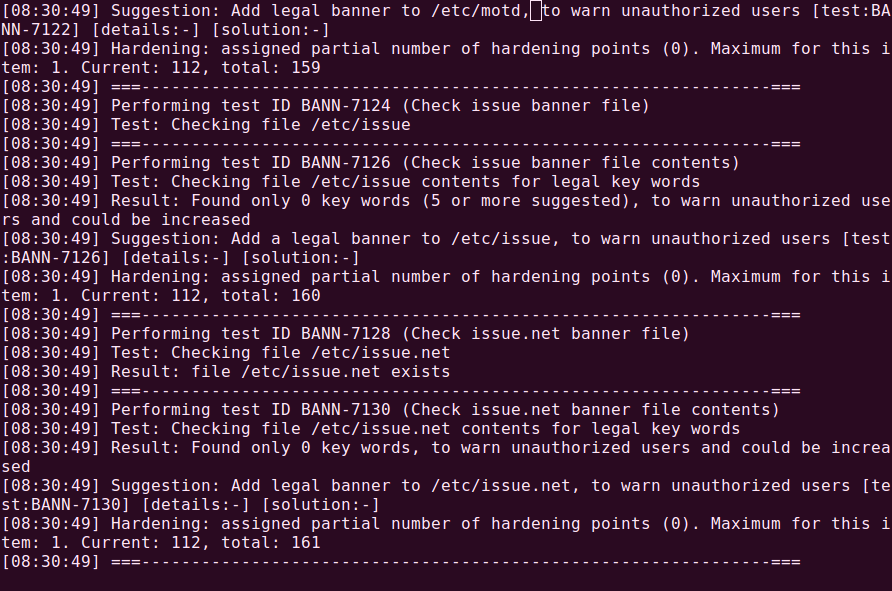
Updating Lynis
If you want to update or upgrade the current lynis version, simply type the following command it will download and install the latest version of lynis.
# ./lynis update info Or # lynis update info
See the attached output of the above command in the figure. It says our Lynis version is Up-to-date.
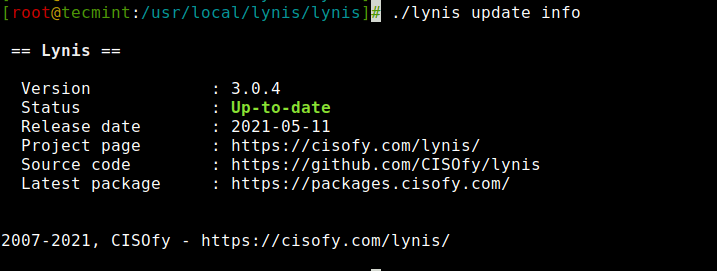
Lynis Parameters
Some of the Lynis parameters for your reference.
- audit system – Perform a system audit.
- show commands – Show available Lynis commands.
- show help – Provide a help screen.
- show profiles – Display discovered profiles.
- show settings – List all active settings from profiles.
- show version – Display current Lynis version.
--cronjob: Runs Lynis as a cronjob (includes -c -Q).--help or -h: Shows valid parameters.--quick or -Q: Don’t wait for user input, except on errors.--version or -V: Shows Lynis version.
That’s it, we hope this article will be much helpful to figure out security issues in running Linux systems. For more information visit the official Lynis page at https://cisofy.com/download/lynis/.






